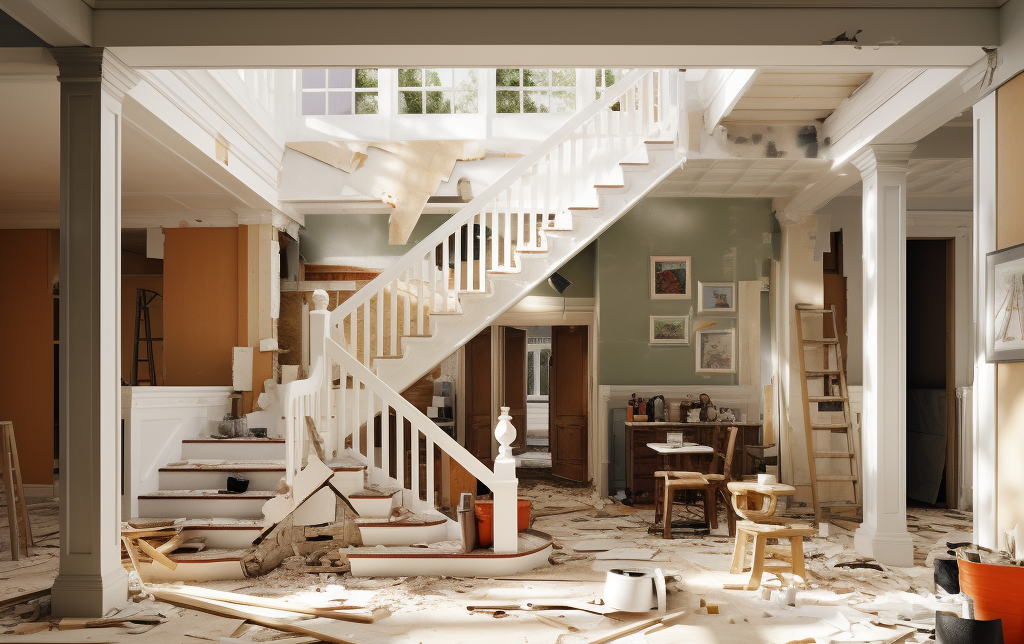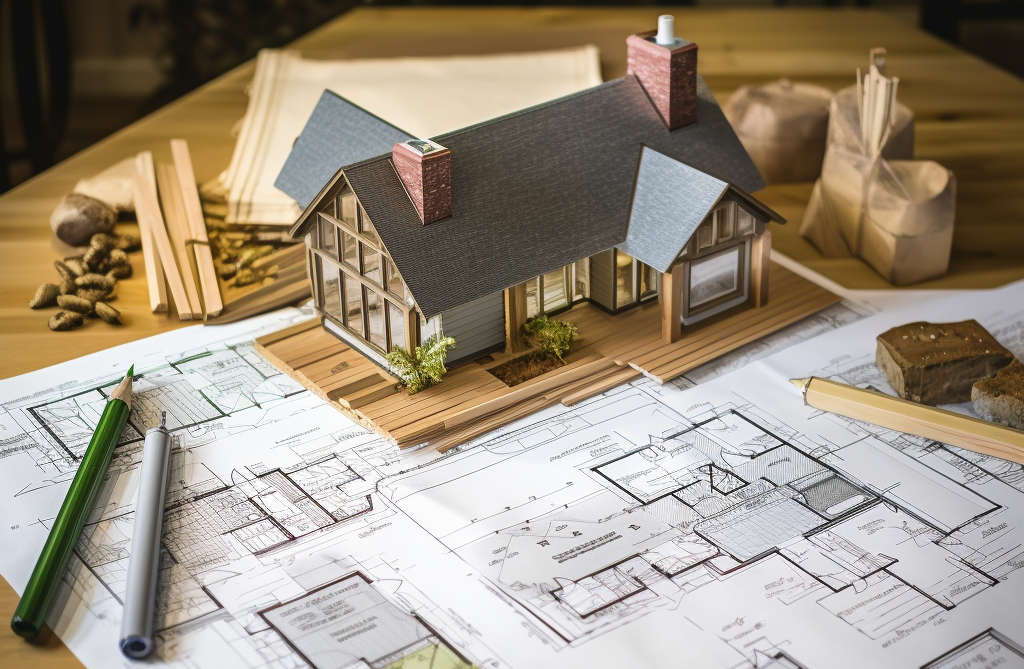Renovating a home can be an exciting venture, offering the opportunity to transform your home into a dream space or to make a profit when selling, if done right. However, the journey from vision to reality in home renovation is paved with challenges, unforeseen circumstances, and potential pitfalls.
To navigate this complex process of home renovations successfully, you need proper preparation, planning, and a step-by-step guide, which is precisely what we offer here.
Types of Home Renovation
Before diving into the renovations process, it's essential to determine the scope of your project. Common home renovation projects include:
- Whole Property Renovation: A comprehensive overhaul of the entire house.
- Single-Storey Extension: Expanding your living space horizontally.
- Multi-Storey Extension: Adding multiple floors to your existing structure.
- Conservatory Build: Creating a light-filled space to enjoy.
- Loft Conversion: Transforming your attic into a functional living area.
- Kitchen Remodeling: Updating and enhancing your kitchen space.
- Bathroom Remodeling: Renovating and modernizing your bathrooms.
- Basement Conversion: Transforming a basement into a livable area.
- Garage Conversion: Repurposing your garage for other uses.
- Garden Landscaping: Enhancing your outdoor space.
The Timeline of Home Renovation
The duration of your renovation project depends on various factors, including its complexity and scale. Here are some general timeframes for common renovation projects:
- Kitchen Renovation: 4-10 weeks
- Bathroom Renovation: 3-6 weeks
- Loft Conversion: 7-12 weeks
- 1-2-Storey Extension: 8-16 weeks
The Cost of Renovation
Renovation costs can vary significantly based on a range of factors. These include the type of work, the builder you choose, whether you need an architect, whether you require planning permission, the project's duration, and unforeseen circumstances. Here's a rough estimate of average costs for common renovation work:
- Extension: £25,000 - £50,000
- Loft Conversion: £40,000
- Bathroom Renovation: £6,000 - £10,000
- Kitchen Renovation: £7,000 - £15,000
- New Windows: £400 - £600 per window
- New Heating System: £4,000
The Right Sequence for Renovating Your Existing Home
When it comes to renovating your existing home, a well-organized and strategic approach is essential for a successful outcome. Here's the recommended sequence for renovating your cherished residence:
- Define Your Renovation Goals: Start by clearly defining your renovation goals. Determine what you aim to achieve with the project – whether it's enhancing functionality, updating aesthetics, or adding more space. This initial step helps shape the entire renovation plan.
- Budget and Financing: Develop a comprehensive budget that considers all aspects of your renovation, including materials, labor, permits, and potential contingencies. Ensure that your financial plan aligns with your renovation goals and that you have a reasonable budget reserve for unexpected costs.
- Prioritize and Plan: Identify the key areas or rooms in your home that require renovation. Prioritize these spaces based on your goals and budget constraints. Create a detailed renovation plan for each area, specifying the changes, materials, and design elements you wish to incorporate.
- Consultation and Professional Guidance: Depending on the scope of your renovation, consider consulting with professionals such as architects, interior designers, or contractors. Their expertise can provide valuable insights, streamline the planning process, and ensure that your project meets local building codes and regulations.
- Renovation Permit and Regulatory Compliance: Research local building regulations and house renovation permit requirements. Ensure that your renovation plans align with these regulations. Secure the necessary permits for home renovation to avoid potential legal issues and project delays. This step is particularly crucial for extensive renovations involving structural changes.
- Demolition and Stripping: Begin the renovation by removing fixtures, materials, or structures that need to be replaced or upgraded. Carefully strip down the selected areas while preserving any elements you plan to retain or repurpose.
- Structural and Core Work: After the stripping phase, focus on structural improvements and core work. This can involve changes to the layout, reinforcing structural integrity, or addressing plumbing and electrical needs. Ensure that the core of your renovation is solid and complies with safety standards.
- Plumbing and Electrical Installations: Implement necessary plumbing and electrical work during this phase. This includes relocating or adding plumbing fixtures, rewiring, and ensuring that your home's electrical systems are up to code.
- Insulation and Soundproofing: Enhance the energy efficiency and comfort of your home by installing insulation and considering soundproofing options. Proper insulation can lead to significant energy savings and improved indoor comfort.
- Wall Framing and Partitioning: If your renovation involves changes to room layouts or the creation of new spaces, this is the phase where you frame walls and partitions. Ensure that these structural elements align with your renovation plan.
- Flooring and Surface Treatments: Install new flooring and apply surface treatments such as paint or wallpaper. This step can significantly transform the look and feel of your home.
- Fixtures and Fittings: Incorporate fixtures, fittings, and cabinetry into your renovated spaces. Choose materials and designs that match your aesthetic and functional preferences.
- Final Touches: Add final touches to your renovation, including lighting fixtures, door handles, and any remaining decorative elements. These details complete the look and feel of your revamped spaces.
- Inspection and Quality Assurance: Before declaring your renovation complete, conduct a thorough inspection. Ensure that all work meets the necessary quality standards and adheres to safety regulations.
- Clean-Up and Final Walkthrough: After passing the inspection, perform a thorough clean-up of the renovated areas. This step includes removing construction debris, dust, and any remnants of the renovation process. Conduct a final walkthrough to ensure that everything is in order and to address any minor issues or adjustments.
By following this sequence, you can navigate the renovation of your existing home in an organized and efficient manner, ensuring that the end result aligns with your vision and expectations.
What to Consider
Before embarking on a renovation project, consider the following:
Age of the Property: Older homes may have hidden issues, so factor this into your budget and plans.
Preserving Original Features: Consider whether to keep and refurbish any original features in your property, as they can add value and character.
Access to the Property: Determine how large machinery will access the site and whether you need to discuss this with neighbors.
Order of Work: Follow the logical order of work, starting with stripping and structural changes, followed by plumbing, heating, and electrical work, and finally decoration.
Obtaining Permits with Parceloop
One crucial aspect of the renovation process is obtaining the necessary permits and approvals. Parceloop is a service designed to simplify the permitting process for home renovation projects. This service helps homeowners navigate the often complex and time-consuming permitting requirements.
Parceloop offers guidance on permit applications, ensures that you meet local regulations, and helps you acquire the necessary approvals to begin your renovation legally and without delays. By streamlining the permitting process, Parceloop can save you time, reduce stress, and ensure that your renovation project starts smoothly.
In conclusion, embarking on a home renovation project can be a rewarding endeavor if you follow the proper steps, consider all aspects, and use resources like Parceloop to help with permits. With careful planning and the right team in place, you can transform your property into the home of your dreams or a valuable asset for future sale.


